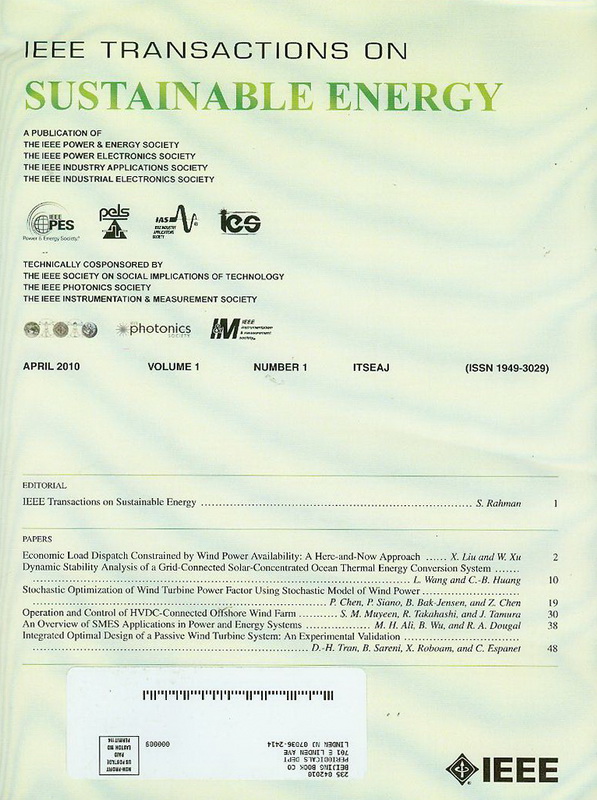Multi-Area-Multi-Stage Based Self-Healing Distribution Network Planning and Operation
IF 10
1区 工程技术
Q1 ENERGY & FUELS
引用次数: 0
Abstract
Extreme events such as earthquakes, floods, or wars could cause severe grid faults and large-scale outages in the distribution network. The active islanding technology can be used for self-healing of multiple outage areas with distributed resources, smart distribution facilities, and advanced controlling methods. The facilities related to the self-healing consist of relays, switches, distributed resources, and power electronics based soft open points (SOPs). However, the self-healing effect depends on not only the location, capability, and function of these facilities, but also the recovery process should be comprehensively considered and coordinated since the multi-stage recovery strategies are deeply coupled. These recovery stages usually consist of the relaying process, grid partition with smart switches (SSWs), resupply by distributed resources, and interconnection with SOPs. For the first time, this paper proposes a multi-area-multi-stage (MAMS) self-healing recovery area (RA) planning-operation collaborative approach considering the recovery sequence. First, the multiple self-healing stages of flexible RAs are defined and introduced. Second, the time-variant topological and operational constraints are proposed to represent the coupling relationships at different stages. Finally, the hybrid controllable load deployment strategy is used to compensate for the limited resource capacity in RA restoration. The effectiveness of the proposed collaborative model is verified by illustrative case studies.基于多区域多阶段的自愈配电网规划与运行
地震、洪水或战争等极端事件可能导致配电网严重故障和大规模停电。主动孤岛技术可以利用分布式资源、智能配电设施和先进的控制手段实现多停电区域的自愈。与自修复相关的设施包括继电器、开关、分布式资源和基于软开点(SOPs)的电力电子设备。然而,自愈效果不仅取决于这些设施的位置、能力和功能,而且由于多阶段恢复策略的深度耦合,需要综合考虑和协调恢复过程。这些恢复阶段通常包括中继过程、使用智能交换机(ssw)划分电网、分布式资源再补给以及与sop的互连。首次提出了一种考虑恢复顺序的多区域-多阶段(MAMS)自愈恢复区域(RA)规划-操作协同方法。首先,定义并介绍了柔性RAs的多个自愈阶段。其次,提出时变拓扑约束和操作约束来表示不同阶段的耦合关系。最后,采用混合可控负载部署策略,对RA恢复中有限的资源容量进行补偿。通过实例分析验证了所提出的协作模型的有效性。
本文章由计算机程序翻译,如有差异,请以英文原文为准。
求助全文
约1分钟内获得全文
求助全文
来源期刊

IEEE Transactions on Sustainable Energy
ENERGY & FUELS-ENGINEERING, ELECTRICAL & ELECTRONIC
CiteScore
21.40
自引率
5.70%
发文量
215
审稿时长
5 months
期刊介绍:
The IEEE Transactions on Sustainable Energy serves as a pivotal platform for sharing groundbreaking research findings on sustainable energy systems, with a focus on their seamless integration into power transmission and/or distribution grids. The journal showcases original research spanning the design, implementation, grid-integration, and control of sustainable energy technologies and systems. Additionally, the Transactions warmly welcomes manuscripts addressing the design, implementation, and evaluation of power systems influenced by sustainable energy systems and devices.
 求助内容:
求助内容: 应助结果提醒方式:
应助结果提醒方式:


